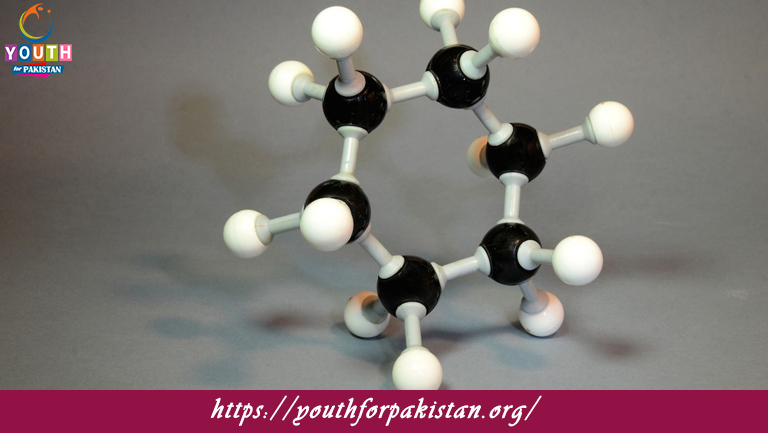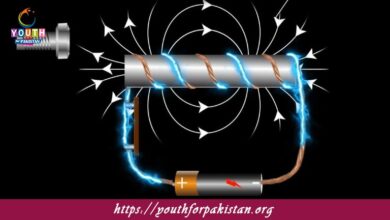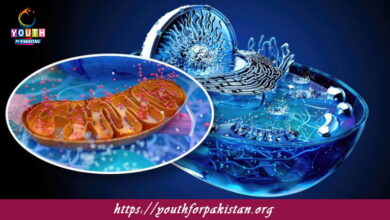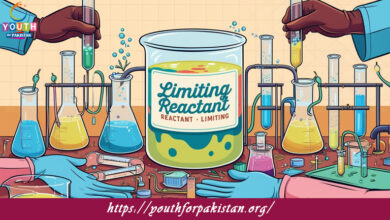Benzene Electrophilic Substitution MDCAT MCQs with Answers

Welcome to the Benzene Electrophilic Substitution MDCAT MCQs with Answers. In this post, we have shared Benzene Electrophilic Substitution Multiple Choice Questions and Answers for PMC MDCAT 2024. Each question in MDCAT Chemistry offers a chance to enhance your knowledge regarding Benzene Electrophilic Substitution MCQs in this MDCAT Online Test.
Which of the following is the most common type of reaction that benzene undergoes?
a) Addition
b) Substitution
c) Elimination
d) Polymerization
In the nitration of benzene, the electrophile is:
a) NO2+
b) HNO3
c) NO2-
d) H2SO4
The first step in an electrophilic substitution reaction of benzene involves:
a) Formation of a carbocation
b) Attack of an electrophile on the benzene ring
c) Loss of a proton
d) Rearrangement of the benzene ring
Which catalyst is commonly used in the halogenation of benzene?
a) FeCl3
b) AlCl3
c) H2SO4
d) NaOH
What is the major product of the reaction between benzene and bromine in the presence of FeBr3?
a) Benzene
b) Bromobenzene
c) Dibromobenzene
d) Benzyl bromide
In the sulfonation of benzene, the electrophile is:
a) SO3
b) H2SO4
c) SO2
d) SO42-
The intermediate formed during the electrophilic substitution of benzene is called:
a) Carbocation
b) Arenium ion
c) Free radical
d) Carbanion
Which of the following is NOT an electrophilic substitution reaction of benzene?
a) Nitration
b) Sulfonation
c) Chlorination
d) Hydrogenation
What is the role of AlCl3 in the Friedel-Crafts alkylation of benzene?
a) Base
b) Catalyst
c) Reactant
d) Reducing agent
Which reagent is used for the nitration of benzene?
a) HNO3 and H2SO4
b) HCl and AlCl3
c) Br2 and FeBr3
d) Cl2 and sunlight
During electrophilic substitution, benzene reacts with Cl2 in the presence of FeCl3 to form:
a) Chlorobenzene
b) Dichlorobenzene
c) Benzyl chloride
d) Chloroform
What is the byproduct of the sulfonation of benzene?
a) Water
b) Sulfuric acid
c) Hydrogen gas
d) Sulfur dioxide
Which reaction is used to introduce an alkyl group into a benzene ring?
a) Friedel-Crafts alkylation
b) Nitration
c) Sulfonation
d) Halogenation
The reactivity of benzene in electrophilic substitution is due to:
a) The presence of delocalized π-electrons
b) The presence of hydrogen atoms
c) The sp3 hybridization of carbon atoms
d) Its high polarity
Which of the following groups activates the benzene ring towards electrophilic substitution?
a) Nitro group (-NO2)
b) Hydroxyl group (-OH)
c) Carboxyl group (-COOH)
d) Cyano group (-CN)
What is the role of H2SO4 in the nitration of benzene?
a) Dehydrating agent
b) Catalyst
c) Reducing agent
d) Oxidizing agent
The product of the reaction between benzene and CH3Cl in the presence of AlCl3 is:
a) Toluene
b) Benzaldehyde
c) Benzyl chloride
d) Benzoic acid
Which of the following reactions is NOT an example of electrophilic substitution?
a) Nitration
b) Bromination
c) Friedel-Crafts acylation
d) Dehydrogenation
During the bromination of benzene, the active species that attacks the benzene ring is:
a) Br2
b) Br+
c) Br-
d) HBr
Which of the following is a common product of the sulfonation of benzene?
a) Benzene sulfonic acid
b) Benzene sulfonyl chloride
c) Sulfuric acid
d) Benzene sulfate
In the Friedel-Crafts acylation of benzene, the acyl group is usually introduced using:
a) Acyl chloride and AlCl3
b) Acyl alcohol and H2SO4
c) Acyl bromide and FeBr3
d) Acyl iodide and HI
Which of the following is a correct order of increasing reactivity towards electrophilic substitution in benzene derivatives?
a) Nitrobenzene < Benzene < Toluene
b) Toluene < Nitrobenzene < Benzene
c) Benzene < Toluene < Nitrobenzene
d) Nitrobenzene < Toluene < Benzene
The intermediate in the nitration of benzene is best described as:
a) An arenium ion
b) A nitronium ion
c) A nitroso ion
d) A carbocation
What is the final step in an electrophilic substitution reaction of benzene?
a) Removal of a proton to restore aromaticity
b) Formation of a carbocation
c) Rearrangement of the benzene ring
d) Attack by a nucleophile
In the chlorination of benzene, which of the following is used as a catalyst?
a) FeCl3
b) AlCl3
c) HCl
d) NaCl
Which of the following groups deactivates the benzene ring towards electrophilic substitution?
a) Hydroxyl group (-OH)
b) Methyl group (-CH3)
c) Nitro group (-NO2)
d) Amino group (-NH2)
In the sulfonation of benzene, which of the following reagents is typically used?
a) SO3 in H2SO4
b) SO2 in water
c) SO2 in HCl
d) SO3 in NaOH
Which of the following is an example of an electrophilic substitution reaction?
a) Dehydration of alcohol
b) Nitration of benzene
c) Hydrogenation of alkenes
d) Oxidation of aldehydes
Which product is formed when benzene is treated with ethyl chloride in the presence of AlCl3?
a) Ethylbenzene
b) Benzyl chloride
c) Benzaldehyde
d) Benzoic acid
The electrophile in the nitration of benzene is generated by the reaction between:
a) HNO3 and H2SO4
b) H2O and H2SO4
c) HCl and HNO3
d) H2O and HCl
Which of the following compounds will undergo electrophilic substitution most readily?
a) Nitrobenzene
b) Benzene
c) Toluene
d) Chlorobenzene
The reaction of benzene with acetic anhydride in the presence of AlCl3 gives:
a) Acetophenone
b) Benzaldehyde
c) Benzyl alcohol
d) Acetophenone
Which of the following reagents is used to brominate benzene?
a) Br2/FeBr3
b) HBr
c) NaBr
d) Br2 and sunlight
In the electrophilic substitution reaction, the electron-withdrawing group on the benzene ring will:
a) Deactivate the ring
b) Activate the ring
c) Have no effect
d) Cause polymerization
Which of the following is an activating group for electrophilic substitution on benzene?
a) Nitro group (-NO2)
b) Amine group (-NH2)
c) Cyano group (-CN)
d) Carbonyl group (-CO-)
The reaction of benzene with acyl chloride in the presence of AlCl3 is an example of:
a) Friedel-Crafts acylation
b) Nitration
c) Sulfonation
d) Halogenation
What happens to the benzene ring during an electrophilic substitution reaction?
a) It remains intact with the aromaticity restored
b) It breaks and forms new bonds
c) It gets reduced
d) It gets oxidized
In an electrophilic substitution reaction, an electron-donating group on benzene will:
a) Increase the reactivity towards electrophiles
b) Decrease the reactivity towards electrophiles
c) Cause polymerization
d) Lead to nucleophilic substitution
Which of the following does NOT affect the orientation of an electrophilic substitution on benzene?
a) The nature of substituents on the ring
b) The presence of a catalyst
c) The temperature of the reaction
d) The solvent used
Which of the following is true about the intermediate formed during an electrophilic substitution reaction of benzene?
a) It is an unstable cation
b) It is a stable ion
c) It is a free radical
d) It is a neutral molecule
If you are interested to enhance your knowledge regarding Physics, Chemistry, Computer, and Biology please click on the link of each category, you will be redirected to dedicated website for each category.





